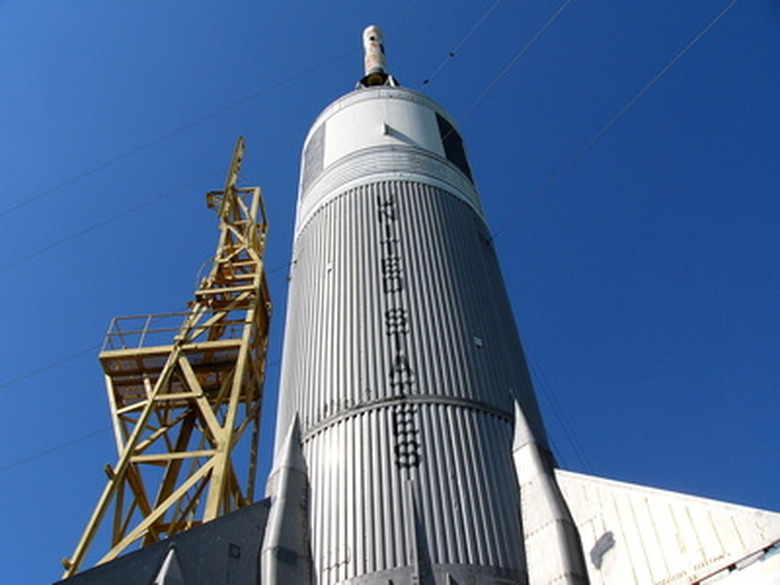Ideas For A Newton Scooter Project
A newton scooter illustrates Newton's third law of motion–that every action has an equal and opposite reaction–by propelling itself forward via the force of air expelled behind it. The easiest and most common means of forcing air to propel the scooter is with a balloon. With the balloon inflated and the open end pointed in the same direction as the newton scooter's wheelbase, it will be propelled in the opposite direction of the expelled air. While newton scooters are simple and easy to design, there are several overlooked factors that can increase the efficiency and effectiveness of any newton scooter project.
Use a Large, Aerodynamic Balloon
The best balloon for a Newton scooter is a long, tubular balloon. It will be desirable to use the largest balloon that will fit on the scooter's frame, as more air capacity will allow a longer period of propulsion and greater distance. Position the balloon parallel to the direction the scooter will travel. Round or spherical balloons will work, but they will expose a greater amount of surface area to the oncoming air as the scooter moves, expending energy to push against the air instead of using it to move the scooter.
Inflate the Balloon as Much as Possible
A sturdy enough balloon should be used so that it can be inflated to its maximum or near maximum capacity without the risk of popping. A properly inflated balloon will have a taut surface and will expel air quickly and forcefully to push the scooter forward. An underinflated balloon will provide little or no thrust, resulting in a Newton scooter that fails to move.
Attach a Drinking Straw to the Balloon
Seal a drinking straw into the stem of the balloon with tape or a small rubber band. The drinking straw will allow a tighter, more defined egress for the air and provide controlled, directional thrust as the vehicle moves forward. The stem of a balloon without a drinking straw will move randomly as air is expelled, pushing in less than optimal directions and frequently changing the direct focus of its force, and this will slow or hamper the Newton scooter's motion.
Reduce the Scooter's Mass and Friction
Use light materials in the construction of the Newton scooter. Construct a skeletal frame with no superfluous designs or features to keep the scooter's weight minimal. The balloon will have a greater affect on a lighter Newton scooter and a scooter with lower surface area will travel farther. Lubricate the axles of the wheels with vegetable oil or graphite to further reduce friction and increase the scooter's speed and distance.
Cite This Article
MLA
Callahan, Rob. "Ideas For A Newton Scooter Project" sciencing.com, https://www.sciencing.com/ideas-newton-scooter-project-2506/. 24 April 2017.
APA
Callahan, Rob. (2017, April 24). Ideas For A Newton Scooter Project. sciencing.com. Retrieved from https://www.sciencing.com/ideas-newton-scooter-project-2506/
Chicago
Callahan, Rob. Ideas For A Newton Scooter Project last modified March 24, 2022. https://www.sciencing.com/ideas-newton-scooter-project-2506/
